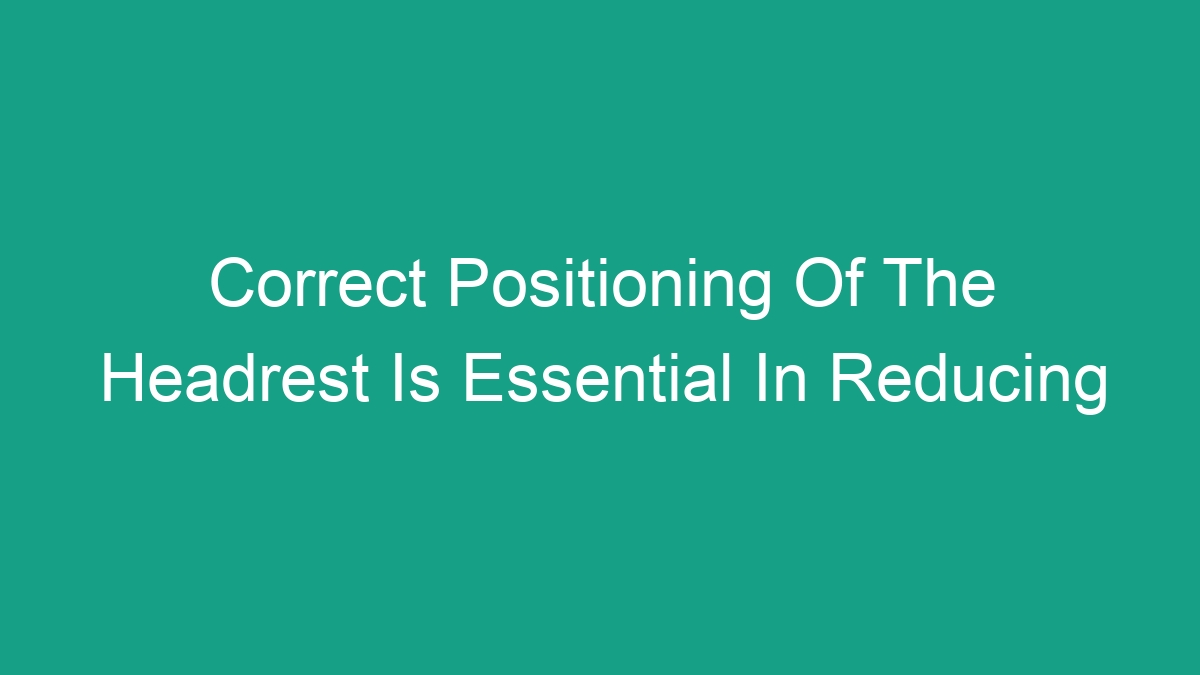
Introduction
When it comes to ensuring safety while driving, many people tend to overlook the importance of properly positioning the headrest in their vehicles. However, correct positioning of the headrest is essential in reducing the risk of neck and spine injuries in the event of a rear-end collision. In this article, we will explore the significance of headrest positioning and provide guidelines for ensuring that your headrest is set up correctly.
The Role of Headrests in Vehicle Safety
Headrests, also known as head restraints, are an integral part of vehicle safety features. Their primary purpose is to prevent or minimize the risk of whiplash and neck injuries in rear-end collisions. When positioned correctly, headrests can help to support the head and neck, reducing the amount of force transferred to the spine upon impact.
The Consequences of Incorrect Headrest Positioning
Incorrect positioning of the headrest can significantly increase the risk of whiplash and other neck injuries in the event of a rear-end collision. If the headrest is set too low or too far back, it may not provide adequate support for the head and neck, leaving the occupant vulnerable to injury. In some cases, a poorly positioned headrest can even exacerbate the effects of a collision, leading to more severe and long-lasting injuries.
Guidelines for Correct Headrest Positioning
Proper positioning of the headrest is crucial for maximizing its effectiveness in protecting occupants during a rear-end collision. The following guidelines should be followed to ensure that your headrest is set up correctly:
- Adjust the height: The top of the headrest should be level with the top of your head or slightly above. This ensures that it can adequately support your head in the event of a collision.
- Adjust the distance: The headrest should be positioned as close to the back of your head as possible, without causing discomfort. This minimizes the gap between your head and the headrest, reducing the risk of whiplash.
- Check the angle: The headrest should be tilted so that it is touching the back of your head. This helps to keep your head in a stable position during a rear-end collision.
- Ensure proper installation: Make sure that the headrest is securely attached to the seat and cannot easily move out of position during a collision.
Common Mistakes in Headrest Positioning
Many people are unaware of the correct way to position their headrests, leading to common mistakes that can compromise their safety in the event of a collision. Some of the most common mistakes include:
- Setting the headrest too low: This leaves the occupant’s head unsupported and vulnerable to injury.
- Leaving a large gap between the head and the headrest: A large gap increases the risk of whiplash and other neck injuries.
- Positioning the headrest too far back: This reduces its ability to support the head in a collision.
- Not adjusting the angle of the headrest: A poorly angled headrest may not make sufficient contact with the head during a collision.
Conclusion
Correct positioning of the headrest is essential in reducing the risk of neck and spine injuries in rear-end collisions. By following the guidelines outlined in this article, you can ensure that your headrest is set up correctly to provide maximum protection in the event of a collision. Remember that taking the time to properly adjust your headrest could make a significant difference in your safety on the road.


